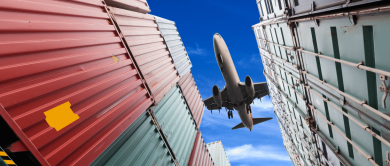Are you confused about the differences between DDP, DAP, and DAT when it comes to shipping? Don’t worry, you’re not alone. These international trade terms can be difficult to understand, but they are crucial in determining who is responsible for paying taxes, duties, and other fees during the shipping process. In this blog post, we’ll break down each term and explain how they affect your business’s bottom line. So grab a cup of coffee and let’s simplify your shipping experience!
Introduction to DDP, DAP and DAT
When it comes to shipping, there are a lot of acronyms that get thrown around. DDP, DAP, and DAT are three of the most common, but what do they mean?
DDP stands for “delivery duty paid” and it means that the seller is responsible for paying all taxes and duties associated with the shipment. The buyer does not have to worry about anything except receiving their goods.
DAP stands for “delivery at place” and it means that the buyer is responsible for paying any taxes and duties associated with the shipment. The seller is only responsible for getting the goods to the designated location.
DAT stands for “delivered at terminal” and it means that the seller is responsible for getting the goods to the designated terminal. The buyer is responsible for paying any taxes and duties associated with the shipment as well as arranging for transportation from the terminal to their final destination.
So, which one should you use? It depends on your specific situation. If you want to avoid any potential hassle or delays, then delivery duty paid (DDP) is probably your best bet. But if you’re looking to save on shipping costs, then delivery at place (DAP) or delivered at terminal (DAT) might be a better option.
The Basics of International Shipping
When it comes to international shipping, there are three main terms you need to know: DDP, DAP, and DAT. Here’s a quick breakdown of each term and what it means for your business.
DDP: short for “delivery duty paid,” this type of shipping includes all costs associated with getting the goods delivered to the buyer, including customs duties and taxes. The seller is responsible for paying these fees upfront, which can be passed on to the buyer in the form of higher prices.
DAP: short for “delivery at place,” this type of shipping only includes the cost of transport from the seller to the agreed-upon destination. The buyer is responsible for paying any additional costs associated with getting the goods delivered to their final destination, including customs duties and taxes. This can often be cheaper for buyers since they can shop around for better rates on things like shipping insurance and Customs clearance.
DAT: short for “delivery at terminal,” this type of shipping only includes the cost of transport from the seller to an agreed-upon terminal or port. The buyer is responsible for picking up the goods from there as well as paying any additional costs associated with getting the goods delivered to their final destination, including customs duties and taxes. Again, this can often be cheaper for buyers since they can shop around for better rates on things like shipping insurance and Customs clearance.
Key Differences Between DDP, DAP and DAT
When it comes to international shipping, there are a few different options for Incoterms (International Commercial Terms). DDP, DAP, and DAT are three of the most commonly used Incoterms, but what exactly do they mean? And what are the key differences between them?
DDP (Delivered Duty Paid) is where the seller is responsible for paying all duties and taxes required to get the goods delivered to the buyer. The buyer does not have to pay anything additional once the goods have been delivered.
DAP (Delivered At Place) is where the seller is responsible for delivering the goods to a specific location agreed upon by both parties. The buyer is then responsible for paying any duties and taxes required to get the goods delivered from that location.
DAT (Delivered At Terminal) is where the seller is responsible for delivering the goods to a specific terminal agreed upon by both parties. The buyer is then responsible for paying any duties and taxes required to get the goods delivered from that terminal.
Advantages and Disadvantages of Each Option
DDP, DAP, and DAT are all shipping terms that indicate who is responsible for paying duties and taxes.
DDP (Delivered Duty Paid) – The seller is responsible for paying the duties and taxes. This option is only available if the seller has a valid license from the country of destination.
DAP (Delivered At Place) – The buyer is responsible for paying the duties and taxes. This option is often used when the seller does not have a valid license from the country of destination.
DAT (Delivered At Terminal) – The buyer is responsible for paying the duties and taxes. This option is often used when the seller does not have a valid license from the country of destination and the goods need to be unloaded at a terminal before they can be delivered to the buyer.
What to Consider When Choosing a Shipping Method
When you’re shipping products internationally, there are a few different shipping methods you can choose from. Depending on your product, your destination, and your shipping budget, one method may be better than the others. Here are a few things to consider when choosing a shipping method:
-Your product. Some products are delicate or require special handling, so you’ll need to choose a shipping method that can accommodate those needs.
-The destination country. Some countries have restrictions on what can be shipped in, so you’ll need to make sure your chosen shipping method can comply with those regulations.
-Your budget. Different shipping methods have different costs, so you’ll need to decide how much you’re willing to spend on shipping before making your choice.
Choose The Right Shipping Option With AGOL Worldwide Inc
Shipping can be a complicated process, but understanding the differences between DDP, DAP, and DAT is key to having a successful delivery. With this knowledge in hand, you can make an informed decision about which method works best for your shipping needs. Hopefully this article has given you the information you need to choose the right option for your business’s unique requirements and ensure that each shipment arrives safely and on time!
Feel free to consult our shipping consultant for your tailored shipping service
















